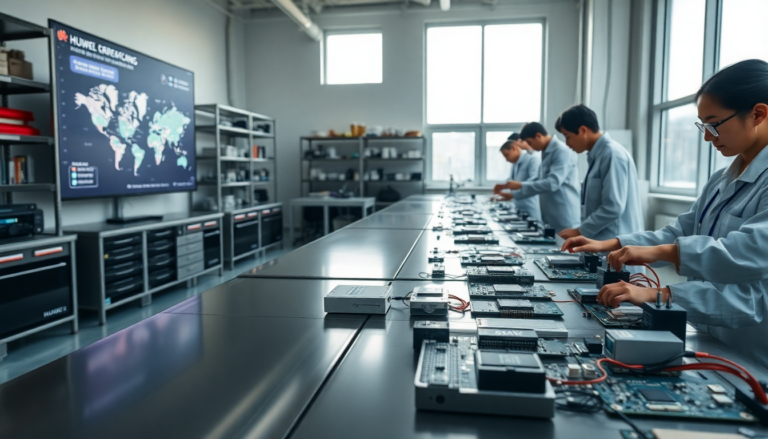Argomenti trattati
Huawei, the Chinese tech giant, has openly recognized its lag in chip production and is determined to bridge this gap. In a recent interview with “People’s Daily,” the company’s founder, Ren Zhengfei, discussed the competitive landscape with American firms and acknowledged that Huawei faces significant challenges in chip manufacturing.
Understanding the chip production gap
During the interview, Zhengfei highlighted the awareness within Huawei regarding the existing gap in chip technology compared to its American counterparts. However, he reassured loyal customers and employees that the company’s intention is to close this divide through strategic investments focused on research and development. This proactive approach aims to enhance Huawei’s chip production capabilities and regain its standing in the tech industry.
Investment in theoretical research
A key aspect of Huawei’s strategy involves prioritizing theoretical research. Zhengfei emphasized the importance of understanding the underlying principles of chip design and manufacturing before moving into practical production. A portion of the upcoming investments will be directed towards strengthening theoretical research, which is crucial for innovation in chip technology. The company believes that a solid theoretical foundation will lead to more effective and efficient chip production processes.
Harnessing distributed computing
Despite acknowledging the gap with the United States, Zhengfei expressed a sense of confidence regarding Huawei’s future. The company is focusing on utilizing distributed computing to enhance chip performance. By connecting multiple chips, Huawei aims to increase processing power and improve overall efficiency.
Notable innovations: AI CloudMatrix 384
One of the significant projects mentioned during the interview is the AI CloudMatrix 384 chip. This innovative chip connects 384 Ascend 910C chips, designed to improve and streamline the training of artificial intelligence models. By leveraging the collective power of numerous chips, Huawei seeks to push the boundaries of AI technology and deliver cutting-edge solutions.
Challenges from U.S. restrictions
The internal challenges faced by Huawei can largely be traced back to restrictions imposed by the United States starting in 2019. These limitations have hindered Huawei’s access to advanced technologies and cutting-edge chips, creating a substantial obstacle for the company’s growth in the semiconductor sector. As the situation continues to evolve, it will be interesting to see how Huawei navigates these challenges and the impact on its upcoming products, including the highly anticipated MatePad Pro 2025.
Future outlook
As Huawei works to address its chip production challenges, the tech community is watching closely. The company’s commitment to research and innovation, coupled with a strategic focus on theoretical foundations and distributed computing, may lead to significant advancements in its technology. While the road ahead is uncertain, Huawei’s determination to overcome obstacles could reshape its future in the tech landscape.

